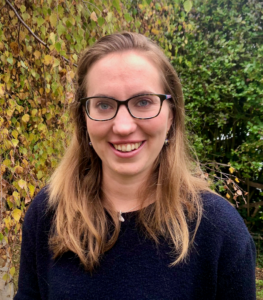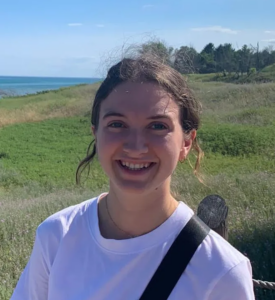Students often express scepticism towards their potential to create meaningful change, but the Planetary Health Report Card (PHRC) initiative is a fantastic example as to why this is simply not true. Not only has effective student leadership enabled the success of shifting medical education towards increasing inclusion of planetary health and sustainable healthcare, but it has also empowered the development of climate action leaders at local levels.
So, what is the Planetary Health Report Card?
The PHRC is a student-led initiative assessing the extent of planetary health and sustainable healthcare engagement in health professional schools internationally. Student teams at each school produce a metric-based report consisting of five sections: Curriculum, Interdisciplinary Research, Community Outreach, Support for Student-Led Initiatives and Campus Sustainability. The aim is to identify strengths and weaknesses at a given institution. A summary report of all the schools is published on World Earth Day annually, including national grading tables, success stories, and recommendations with pertinent examples. This collates all the key information, helps track progress and facilitates international cross-institutional learning.
In the four years since its first pilot in 2019, the PHRC has expanded to 105 reports from 13 nations across 4 disciplines – medicine (96), nursing (4), pharmacy (4) and physiotherapy (1). There are extensive examples (e.g. website, summary reports, published articles) of how the PHRC has catalysed a shift to increased emphasis on planetary health and sustainable healthcare within medical schools. As a quantitative representation, in the UK where most medical schools have participated since 2021, the mean score of participating schools has increased in the two consecutive years since from 48% to 53% to 60%.
What has led to PHRC being so successful?
As the scale of PHRC growth and impact is quite unique for a voluntary student organisation, we have reflected on what qualities of the organisation made this possible. As with any new initiative there must be three key ‘ingredients’ for success:
- A ‘gap in the market’
- A good quality ‘product’
- The people
The gap in the market was the easy part – it has been well established in the literature that the planet’s health affects human health, and that there is a lack of education about this in medical schools. Co-founder Karly Hampshire, UCSF student, was inspired to create the PHRC in the 2019 California wildfire season, when she was alarmed by the irony of wearing an FFP3 mask while walking to her respiratory lectures, where there was no mention of the changing climate. Hannah (co-author), was alerted to the ‘gap’ when discussing the lack of teaching at her medical school with a senior faculty who remarked; “Is there not a ranking table for this within medical schools? That’s the kind of thing that really gets them motivated.”
The other two ‘ingredients’ go hand in hand. The ‘product’ is the report card; the individual institutional report cards, and the annual global summary report, with its quality and value having been recognised across journals internationally including in the Lancet. However, to achieve this, the people are the real key for turning an idea into a successful reality – from inception to implementation to expansion.
Below we highlight fundamental human factors that we believe have enabled the PHRC to thrive.
- Student-driven
There are many stakeholders of change within medical education including faculty, medical regulators, health professionals and students themselves. In an emerging field where unfamiliarity amongst the experienced generations is a significant barrier to change (as with Planetary Health) informed students can generate extremely powerful momentum to shift priorities within their educational institutions when approached in a constructive way.
- Collective leadership
The PHRC ambition was too big to be achieved by one person. It was critical to identify multiple individuals with the passion and attributes to be part of the leadership team. Each year we adapt roles to suit applicant’s strengths and passions, which has been particularly successful, allowing us to maintain our professional ‘product’.
- Listening and adapting
We have always prioritised gathering and listening to feedback – from students, expert individuals and organisations. This has been a huge asset to the initiative’s growth and reputation. The design of the PHRC as a needs-assessment tool rather than a piece of research, has the advantage that feedback can be incorporated rapidly because it can be adapted annually to maximise international applicability across an increasing variety of cultures and educational systems.
- Ambitious realism
Planetary Health and sustainable healthcare are not topics well known to most faculties and, to ensure the PHRC was taken seriously when rolled out, it was critical that the metrics were ambitious but realistic. They had to be specific enough so that the PHRC was a valuable tool to catalyse change rather than a mere grading system.
- Creating community
With such a vast and dispersed group geographically, it was important to maintain a sense of belonging, as a feeling of anonymity causes disengagement. Regional leads have been key to fostering a more local community – meeting new participants on zoom, being a consistent point of contact, and advertising relevant local events and conferences. Digital platforms also allow easy communication between the hundreds of like-minded students participating worldwide, including sharing ideas, successes, and struggles.
- Enabling autonomy and initiative
Recognising that each educational institution is different, the PHRC is a tool to facilitate change rather than dictate how change should be implemented. This is crucial to maximise impact and keep participating students stimulated. Feedback tells us that this combined with the PHRC structure, support and resources has given students the confidence and platform to become climate action leaders within their own institution, and more widely.
A victim of our own success?
Leadership requires an assessment of challenges as well as strengths. A central challenge has been our massive expansion that has occurred over the last few years – both geographically and to new healthcare disciplines. Geographical expansion poses the following challenges: Language translation, coordination of teams across time zones, and academic calendar variation across two hemispheres. Furthermore, multidisciplinary expansion produces its own set of challenges such as recruitment into new networks, less familiarity with the courses, and leadership continuity in often shorter degrees. Placing an emphasis on expansion into both non-English speaking and developing nations, as well as establishing robustness in healthcare disciplines beyond medicine are two priority goals for our next cycle.
Whilst continued growth is rewarding and exciting, the whole process has been a steep learning curve. We have all been developing new practical and personal skills as they arise by necessity. Not infrequently, feedback and setbacks have pushed us to question preconceived ideas, strengthening the initiative in the process.
What does it mean for the climate movement?
In a world where patients are increasingly presenting with illnesses caused by environmental degradation, while in parallel the healthcare system is changing by necessity to reduce its climate impact, it is critical we empower clinicians and students to engage with planetary health and the climate movement. The success of the PHRC tells us that leadership can come from anywhere in the traditional hierarchy and, in fact, students can be key drivers of powerful change.
Authors

Dr Hannah Chase
Hannah is currently an FY2 at Oxford University Hospitals Trust. In 2020, while a medical student in 2020 she introduced the PHRC to the UK and became UK lead (2020-21), successfully recruiting 30 of the 33 medical schools in the UK to participate. A couple of months into her role she was asked to become co-director of the PHRC (2020-22) alongside Karly Hampshire and has won the ASME New Leaders Award for her work. Last year Hannah has been partnerships co-chair of the initiative and this year is going to take on the role of Interdisciplinary Coordinator.
Twitter Handle: @HannahChase41

Dr Isabel Waters
Isabel is working in St James’ Hospital, Dublin as an intern after graduating in June 2023. This is her second year as PHRC Co-Director. Prior to this she was Ireland regional lead in the 2021-22 cycle and a participant in the Trinity College Dublin (TCD) report card in 2020-21. Isabel is interested in the relationship between the natural environment and human health, as well as the social determinants of health. She has won the TCD Sustainability Leadership Award for her work with the PHRC.
Twitter Handle: @IsabelWaters20
Declaration of interests
Other than an interest in the PHRC through their voluntary roles Hannah and Isabel have no other declarations of financial investment in a related organisation